A cell phone booster is a great addition for many RVers. The RV lifestyle brings us to many locations that don’t offer great cellular service, but most of us still want to stay connected with our friends, family, and the larger outside world.
Getting a stable cellular connection can also become essential if your RV is broken down or you’re experiencing another type of RV emergency. Being stuck in the middle of nowhere without a cell phone signal is never a great feeling when you’d really like to make a call.
With the best RV cell phone booster, the existing signal your cell phone picks up will be strengthened so you can reach out to whomever you need. This type of cell signal booster can deal with variable weather conditions and environmental interferences.
A signal booster is also great for reducing the likelihood of dropped calls, which can be super important in case of a remote emergency. Improvements to call clarity and data streaming performance are two additional benefits of getting a cell phone booster for your RV.
So, Cellular signal boosters do work—but which one is best for RVs?
To answer this, I’ve tested and reviewed the 5 best cell phone boosters for RV living and provide a comprehensive buying guide designed to help you find the perfect booster for your RV lifestyle.
I’ll also conclude the article with answers to the most frequently asked questions about cell phone signal booster for camping and RVs.
At a Glance: Our Top Picks For Best RV Cell Phone Boosters Choices For 2023
For your convenience, here are the top 5 best RV cell phone booster that you can buy in 2023.
The 5 Best Cell Phone Boosters for RV in 2023: Reviews
A cell phone booster can be installed in your RV to make sure you always have a usable signal, whether you’re moving down the road or parked in a rest stop overnight.
Let’s look into detailed reviews below of our top five best cell phone booster for RVs or camping.
1: Best Overall: weBoost Drive 4G-X RV 470410 Cell Phone Booster
The weBoost Drive X RV cell phone booster is designed as a wireless solution that boosts signal to multiple users on different devices.
It’s also fit to provide reliable service for many years to come, as it includes the requisite technology to boost 5G cell phone signals.
That’s a big deal when you’re considering making a significant investment in a cell phone booster, which this model does require.
If you’re looking for a RV cell phone booster that works in all situations, this model works whether your vehicle is parked or in motion.
When compared with the weBoost Drive Sleek cell phone booster, the Drive X can boost signals from cell phone towers up to 33% farther away.
It achieves this added range through the use of an omni-directional antenna that is installed to the roof of your RV.
One of the great places that I saw someone install their Drive X RV cell phone booster was right on the ladder on the back of their RV.
Once installed, the antenna can extend up to a height of 23 inches to increase its range.
The base of that antenna is spring-loaded, which I think is great because it allows some flexibility as the antenna is impacted by wind on the road.
In terms of power requirements, this booster requires a 12-volt DC connection.
To give you the freedom to install as you desire, it comes with 25 feet of cable to connect the outside antenna to the drive booster.
The booster itself weighs less than one pound and is small enough to barely be noticed inside your RV. Its dimensions are 6.25” x 4.25” x 1”.
Things We Like
Things We Don’t Like
2: Best Compact Design: SureCall Fusion2Go 3.0 RV Cell Phone Signal Booster Kit
With dimensions of 5.625” x 4” x 1.125”, the SureCall Fusion2Go Max cell phone booster is a great solution for anyone that doesn’t want to add a bulky antenna or large booster box to their RV setup.
In spite of its compact size, this booster supports the largest number of simultaneous users possible, which means you won’t have to worry about using it with just one device at a time.
Like the weBoost Drive X, this cell phone booster is built to adapt with the next generation of cell phone technology.
It has the required technology to boost voice and data 4G LTE signals to 5G phones and devices.
The antenna on this model is super compact so that you won’t have to worry about a long pole extending from the top of your RV.
This is important for reducing the likelihood of your booster’s antenna getting damaged by low-hanging branches or other obstacles you might encounter on the road.
You won’t need to change your cell phone service in order to be compatible with this cell phone booster.
It works with all major cell carriers in the U.S., Canada, and Mexico, including T-Mobile, Verizon, AT&T, and Sprint.
One of the best features, in my mind, of this cell phone booster is its ability to perform in remote areas.
The booster’s built-in 2XP technology provides double the uplink power for improved rural performance.
Things We Like
Things We Don’t Like
3: Best Budget: Phonetone Dual 700MHz Cell Phone Signal Booster
Those working with a constrained budget should look more closely at the Phonetone Signal Booster.
It’s one of the most affordable boosters I found that still offers dual-band boosting of 4G LTE data and voice signals for Verizon, AT&T, and T-Mobile users.
It works with Verizon Band 13 and AT&T/T-Mobile Bands 12 and 17.
This is a wireless booster that can amplify signals to multiple cell phones or devices at a time and improve streaming data speeds as well.
It’ll help you reduce the amount of dropped calls you experience when parked in remote locations and automatically readjusts to find the closest cell towers with the best signal when you move to a new location.
One feature that really caught my attention with this booster is something called ‘Inactivity Mode’.
When you’re not actively on a call, trying to make a call, or streaming data, this booster slips into a standby mode that reduces the amount of static power it requires by up to 30 percent.
This is a great feature for off-grid RV living where energy saving is a must.
Things We Like
Things We Don’t Like
4: Most Trusted by First Responders: KING KX1000 Extend Cell Phone Signal Booster
First responders trust this cell phone booster because, if you really need to make a call when time is of the essence, there are few models that provide the level of reliability that you’ll get with the KING KX1000 cell phone booster.
It supports all major U.S. carriers and has the capability to acquire 3G and 4G LTE signals.
Like the best cell phone boosters on the market today, this model is ready to acquire reliable signals for 5G phones and cellular devices.
The importance of 5G capability cannot be understated, as this is the future of cell phone connectivity.
I also like that this booster can support multiple users on different devices at one time.
Some cellular boosters require the purchase of an additional monthly service, but this is not the case with the KING KX1000.
It also gives you lots of versatility in terms of how you install the antenna and booster unit in your RV.
This booster can be mounted securely on the roof, ladder, or an exterior pole of your RV.
Things We Like
Things We Don’t Like
5: Best For AT&T/T-Mobile 4G LTE: PROUTONE 700MHz RV Signal Booster
Exclusively designed for AT&T/T-Mobile 4G LTE cellular users, the Proutone cell phone booster delivers faster streaming, higher audio quality, and boosted 4G HD voice and data speed.
It boosts only 4G bands 12 and 17, but it can provide boosted signals for multiple users on multiple devices simultaneously.
With a coverage area up to 4,500 square feet, this booster has plenty of coverage area for all RVs and will also allow you to connect to a boosted signal when making calls or streaming data from just outside of your rig.
The yagi antenna configuration on this booster is easy to install but requires some knowledge of which direction to point it in order to acquire the best signal possible.
There are several features of this cell phone booster that work for you when you won’t even notice.
It’s equipped with Inactivity Mode, which helps you save energy by reducing static power consumption when the booster isn’t actively being used for a call or data streaming.
It also boasts a gain of up to 65 dBi and the automatic gain control feature serves to reduce gain and interference when input or output is too strong, thereby giving you an optimal signal.
Things We Like
Things We Don’t Like
What to Look for When Buying a Cell Phone Booster for RV
When you’re looking through these cell phone boosters, it can be easy to get caught up in all the technical components and information.
I know I almost got caught going down a rabbit hole myself when doing the research for this article.
What we really want to know (I hope!) is what will make a cell phone booster for my daily life.
So I’ve tried to stick to the considerations you’ll need to find a solid model and install it easily in this cell phone booster buying guide!
1: Booster Types
Most of the boosters that are designed for RV use can be separated into two categories: cradle boosters and wireless boosters. Here’s a little more about each:
Cradle
Cradle boosters can only amplify the signal to a device when that device is connected. The main advantage of this type of cell phone booster is availability at a more affordable price.
Wireless
Wireless boosters, as their name suggests, can boost the signal to a coverage area around the location where the booster is plugged in.
The signal to any cell phones within that coverage area will be amplified. Both of these booster types do a very effective job at boosting cell phone signal in an RV.
Because RVs are usually very limited in terms of square footage, it’s not so inconvenient to always have to plug in to a cradle-style booster in order to make a call.
However, a wireless booster is always going to be better if you want to boost signal to multiple devices at one time.
2: Antenna Features
Most of these cell phone boosters come with two antennas. One is installed inside of your RV and the other is made for external use.
One of these antennas is responsible for sending and receiving signals from the closest cell tower. The other transmits that signal to your phone or cellular device.
Gain is one of the most important technical specifications when determining how much range a cell phone booster will give you.
Gain will usually be expressed in terms of dBi, which stands for decibels relative to isotropic radiator.
Antennas with a higher gain (i.e. higher dBi) will give you a longer range over which to acquire a reliable cell signal.
A reliable cell phone booster should have a maximum gain of at least 5 dBi. You should also consider the design of the antennas themselves.
You probably won’t want the antenna that’s installed inside your RV to be monstrous and unsightly.
The external antenna, on the other hand, should be capable of handling high winds and installed securely to avoid damage or losing the antenna entirely.
In wide-open rural areas, a high-gain antenna is best because the primary factor that limits quality cell phone signal is simply distance from cell phone towers.
In other cases, however, a low-gain antenna might be more appropriate.
Low-gain antennas are best for use in mountainous terrain or locations where there are nearby physical barriers that can block signals.
3: Coverage Area
Fortunately, most RVs have a relatively small coverage area. Even my 36 foot RV (relatively long by RV standards) only has a total area of 288 square feet.
That being said, you need to make sure that the booster you choose can provide a signal in a substantial enough area that you’ll be able to get decent service throughout your RV.
If you like to sometimes step outside to make phone calls, keep the need for a boosted signal over that additional area in mind as well.
4: Installation Requirements
Cable length is a really important component of the installation process.
For example, if I wanted to install the exterior antenna on the ladder at the back of my RV, I’d need at least 40 feet of cable if I wanted to install the internal components in the cabinet above the driver’s seat.
Before buying a cell phone booster, you should know where you plan to install its interior and exterior components.
Having this knowledge in mind will help you know how much coaxial cable length you need for a successful installation on the first go-round.
As a general rule of thumb, it’s better to have too much cable than to come up short when you’re installing your new booster.
Another consideration when installing a cell phone booster pertains specifically to the external antenna component.
Look for a booster that comes with all of the hardware you’ll need to install the booster to your preferred location.
If you have to drill holes to screw anything into the roof of your RV, make sure you’re prepared to properly seal and weatherproof any new holes you create in your roof.
5: External Signal Strength
The performance of your cell phone booster entirely relies upon the strength of the external signal it is boosting.
The strength of your external signal is largely dependent upon the location where your RV is parked, or the landscape that’s currently flying by outside of your windows.
If you know you’re going to be working with a weaker external signal, then it should go without saying that you’ll need to purchase a more powerful signal booster.
On the other hand, having a stronger external signal will allow you to get away with buying a more reasonably priced cell phone booster for your RV.
Top 5 RV Cell Phone Boosters: How Do They Compare
A cell phone booster is a great addition to your RV lifestyle, especially if you tend to visit more rural or remote locations.
These models all come with various advantages and disadvantages, depending on how you live and your connectivity preferences.
If you’re looking for the best cell phone booster that money can buy (and budget isn’t an issue), don’t overlook the weBoost Drive X.
You might spend a little more, but it comes with enough cable to make installation easy in longer RVs and you won’t have to replace it when all of your phones and devices require a 5G signal.
One of the most compact cell phone boosters you can buy is the SureCall Fusion2Go Max.
The small antenna guarantees that you won’t have any issues with damage from low-hanging branches and the amplified uplink power will give you the extra data streaming performance you need to catch up on your Netflix shows when camping in rural areas.
When your budget’s a little tight but you still need a cell phone booster that provides great performance, you can’t go wrong with the Phonetone Signal Booster.
The price is right and this booster is ideally suited to your off-grid lifestyle with specific settings to decrease power consumption when not in use.
For a cell phone booster that’s trusted by the first responders that you hope will come to your rescue in case of an emergency, the KING KX1000 offers trusted performance and the ability to mount the external antenna in a variety of locations that suit your individual preferences.
If you’re an AT&T or T-Mobile user, the Proutone Signal Booster has a massive coverage area that will provide a great signal both inside and immediately outside of your RV.
It also supports multiple users at once so that you and your travel companions can coordinate phone calls back to catch up with family and then get on with your adventures.
Frequently Asked Questions
Although I hope you’ve already found the best cell phone booster for RV living by now, I recognize there may still be a few questions left unanswered.
In this section, I’ll provide brief answers to frequently asked questions about these boosters.
How do these boosters really work?
For starters, the outer antenna captures the cell phone signal reception in your area. That can change when you’re on the road and be more consistent when you’re stationary.
The internal antenna then rebroadcasts the signal throughout your RV. This means boosted reception and, on your cell phone’s screen, more signal bars.
How many cell phones can a booster support at once?
The answer to this question obviously depends on the model and brand you choose, but most wireless boosters don’t necessarily have a limit on the number of devices they can support at once.
Most are able to boost signal to several (i.e. more than two) devices simultaneously.
This can also depend on the strength of the outside signal your booster is working with.
When you have a stronger outside signal, more devices will be able to obtain a quality signal from your booster.
If the outside signal is weak, however, it will support fewer devices.
Can I use these products to boost WiFi for my tablet or computer?
If the WiFi in your RV is reliant on a cellular signal (i.e 3G, 4G, LTE, 5G), then a booster designed to amplify those signals will serve to improve your WiFi connectivity as well.
The device simply acquires compatible signals and rebroadcasts them throughout your vehicle, so you should be able to enjoy faster download speeds and smoother streaming if all of your devices are compatible and meet all requisite system requirements.
Do I really need a cell phone booster?
There are several benefits of a cell phone booster for your RV, especially if you live or travel to remote locations.
It will improve the quality of your calls and decrease the likelihood of dropped calls.
It will also increase upload and download speeds, improve your phone’s battery life, increase your ability to send and receive text messages, and provide a wider coverage area that allows you to make calls both inside and outside of your RV.
Will it still work when I turn on my mobile hotspot?
The short answer to this question is yes. Most cell phone boosters boost all signals being received by your cell phone.
So your cell phone booster should still amplify your phone’s signal and may actually improve the reliability of your mobile hotspot.
Conclusion
Made for those RV camping or living in rural or remote locations, a cell phone booster is an important addition to enhance your connectivity as an RVer.
Sometimes a cell phone booster can be essential to your ability to contact emergency personnel, but we wish all of you beautiful RVers out there only the best!
As a good mentor of mine always said, “It’s better to have it and not need it than to need it and not have it.” There are many items that fall into this category, and an RV cell phone booster is no exception.
You can never quite know when getting cell phone reception can become a matter of life and death, so be sure to invest in the best cell phone booster for RV before it’s too late!

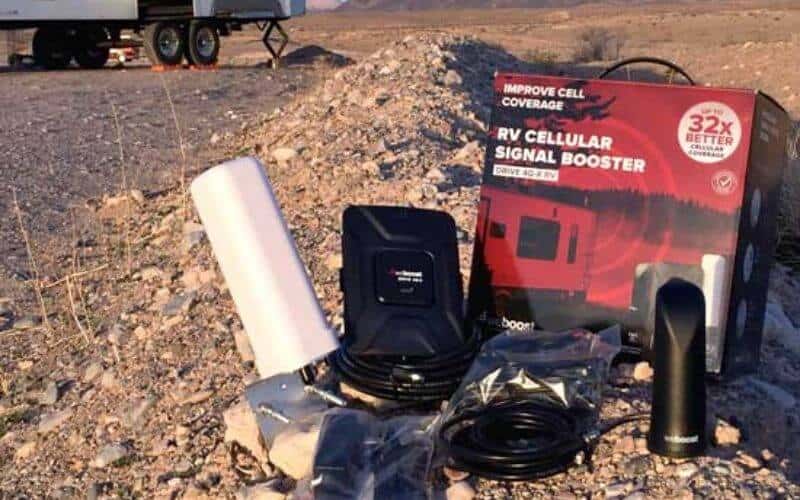
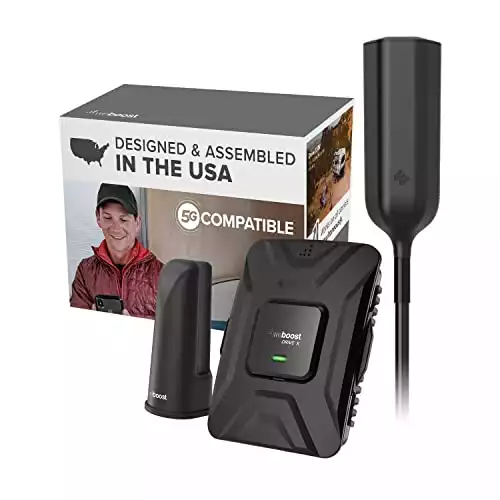
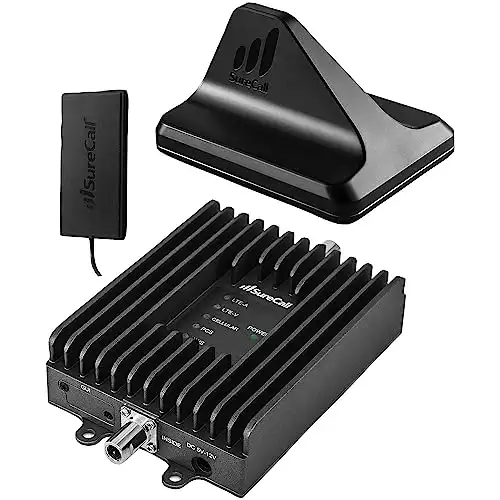
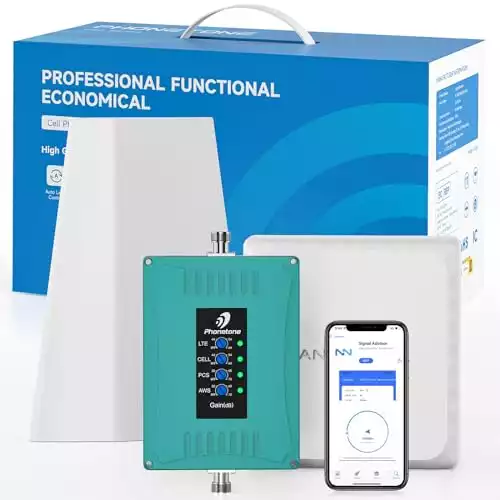
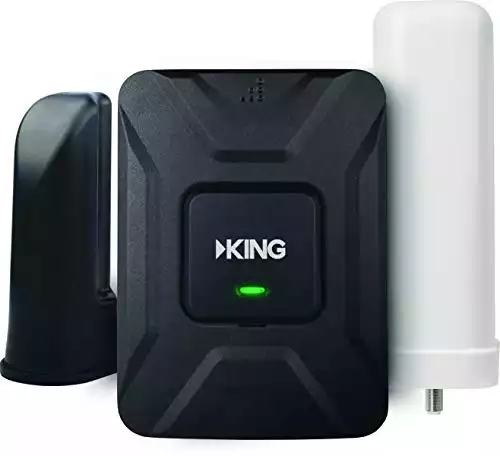
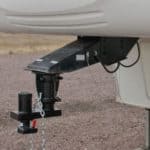
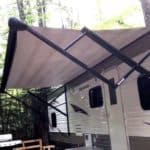
![8 Best RV Bike Racks in [currentyear]: Hitch Options for Your Travel Trailer 8 RV Bike Rack](https://www.rvingknowhow.com/wp-content/uploads/2020/07/RV-Bike-Rack.jpg)
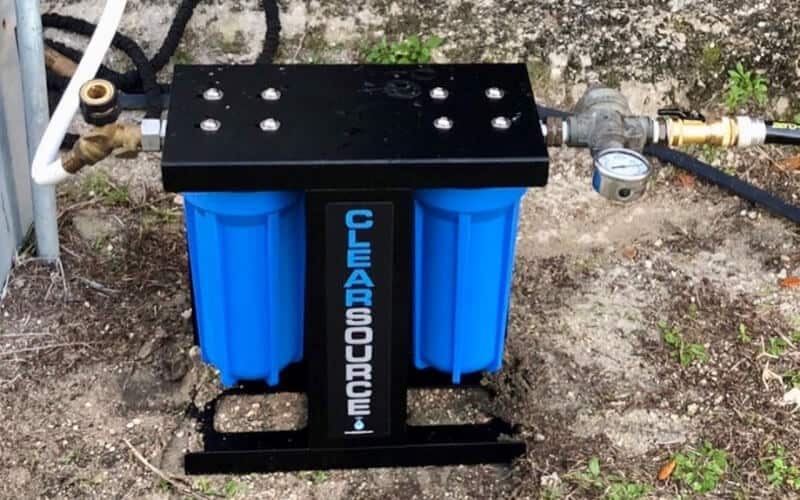
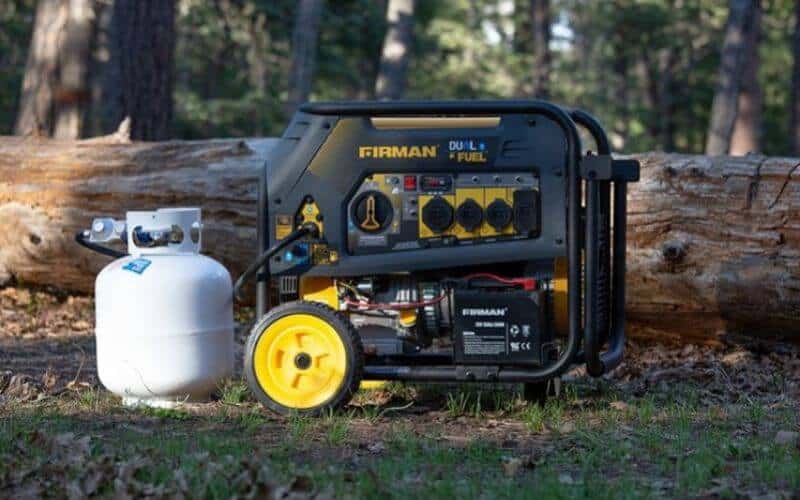
3 Comments
Dalton
2 years agoI have used cell phone boosters for two months at an RV campground in Tombstone, Arizona, where AT&T and Verizon service were marginal. The signal was boosted enough to enable me to work remotely through Remote Desktop and also download large data files. It works for stationary use and in motion. It is also capable of supporting several devices without compromising the fast network speed that it can provide. In addition, it’s compatible with almost all carriers and provides excellent cellular coverage.
Samantha Nichols
2 years agoThe SureCall worked much better than expected and boosted a very weak signal to LTE on Verizon. We camp a lot and while deep in National Park, it won’t get a signal, we have been pleased with getting enough service in most places to be able to at least text or call someone. Our first unit got zapped in a power overload, and we could tell this cell phone booster was missing. Glad to have it back. Worth the investment to have cell service while traveling.
John Wesley Foy
1 year agodoes the boosters have a password or pin to prevent everyone in
the area from using the booster